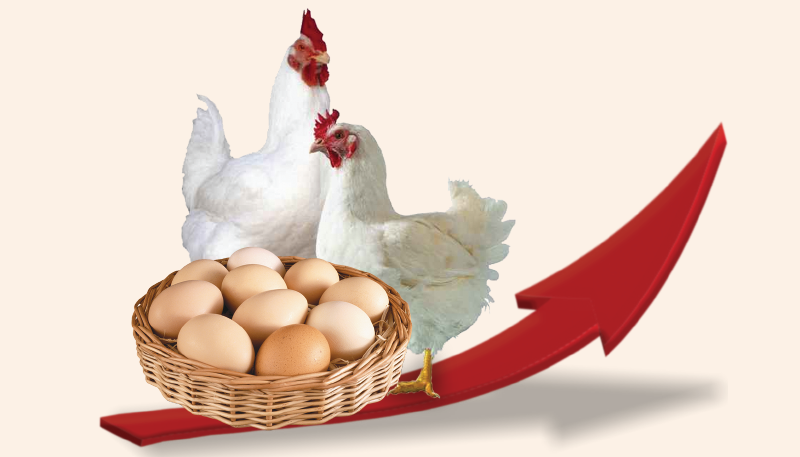


Poultry products including eggs and broiler chicken are expected to see a sharp rise in Indian poultry sales and, consequently, prices starting September — following the two-month-long Shravan restrictions.
Hindus in parts of northern and western India follow dietary restrictions during the Shravan period. Sales dipped by 15-20% in North and West India during July and August.
Shravan month generally indicates15-20% lower sales. This year, the effect will be multiplying because it is being observed for two months. As soon as Shravan gets over, the poultry industry is expected to witness a strong rebound in terms of sales, and it is likely to grow more than 10% year-on-year in September alone.
Since mid-June, poultry prices have been on the rise due to a combination of factors, including logistics and higher poultry feed raw material costs. Broiler chicken prices at the farmgate of Delhi’s Gazipur are expected to touch ₹150-160 a kg from ₹120-125 at present.
This is because of a substantial demand is anticipated in September from people who fall under low-and-marginal-income group amid soaring vegetable prices and as prospects of kharif crops — maize and soybean — remain poor amid deficient rainfall in August, raising yield concerns.
Egg prices are expected to go up in tandem with broiler chicken prices. While egg is available at ₹ 426-501 per 100 pieces in Bengaluru, Kolkata, Delhi and Mumbai, the average price of broiler chicken at the farm gate is around ₹118-121 a kg in Bengaluru, Kolkata and Delhi.
Prices of broiler chicken and eggs shot up in April-June because of extreme heatwaves in some pockets of the country causing higher mortality in chicken, weighing on production and consequently supply. This gradually eased off in July due to a change in eating habit and less demand from North and West India during Shravan.
Wholesale prices of maize shot up to ₹ 1,935-2,100 per quintal during June-August from ₹ 1,800-1,900 during April-May in Bihar and Madhya Pradesh after touching ₹ 2,400 a quintal in March. This current rise in prices is attributed to dry or inclement weather conditions so far in the four-month monsoon season ending September.
Soybean prices are either stable or have been falling since February. Maize and soybean are major feed for animals including poultry. Sluggish demand again in October and November as North and West India celebrate Ganesh Chaturthi and Navratri.
Retail inflation in broiler chicken and eggs, account for 1.23% and 0.43%, respectively in the food and beverages basket of Consumer Price Index, rose to 0.3% and 3.8% in July 2023 from (-) 1.5% and 7% in June 2023.
Prices of feed raw material (maize and soya) account for 70-80% of the total cost while transportation, marketing, medicines and maintenance form another 5-10%. Typically, a chick consumes feed amounting to 2-2.5X times of its body weight. Thus, the prices of feed cost have a direct impact on the profitability. Last year as prices of feed rose and passing on of the same was not possible fully, margins for the poultry players dropped. With moderated input prices and fresh crop arrival in H2, margins will go up to 5.5% in fiscal 2024.
Thus, Indian poultry industry’s revenue is expected to grow at 10% in FY2024. This would have been higher if not for the price moderation seen in the current year. Last fiscal, realisations had gone up significantly due to input cost inflation, leading to a growth rate of 25%.
Source – livemint

